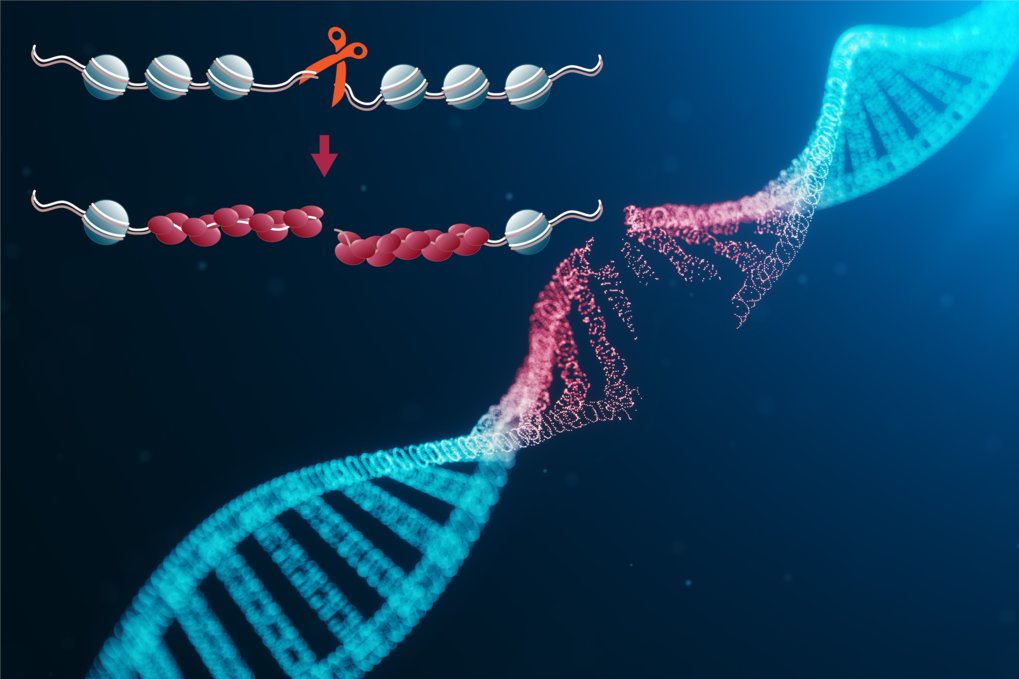New method for the analysis of DNA double strand breaks

Researchers at the Max Planck Institute of Biochemistry have established a new technique based on Next Generation Sequencing that determines whether a protein binds to single-stranded or double-stranded DNA.
DNA in our cells is constantly exposed to damaging agents, such as UV light or byproducts of cellular metabolism like reactive oxygen species. The most severe form of DNA damage are DNA double stranded breaks. In order to keep the genetic information intact, cells need to repair these double stranded breaks. The most faithful repair process is homologous recombination, which involves DNA end resection, the degradation of one DNA strand at each side of the break. Two different domains are therefore created around the double strand breaks: one containing single-stranded DNA and one containing double-stranded. Researchers from the team of Boris Pfander, head of the research group "DNA Replication and Genome Integrity" at the Max Planck Institute of Biochemistry have now developed a ChIP-seq-technique, based on chromatin-immunoprecipitation followed by next-generation sequencing.
